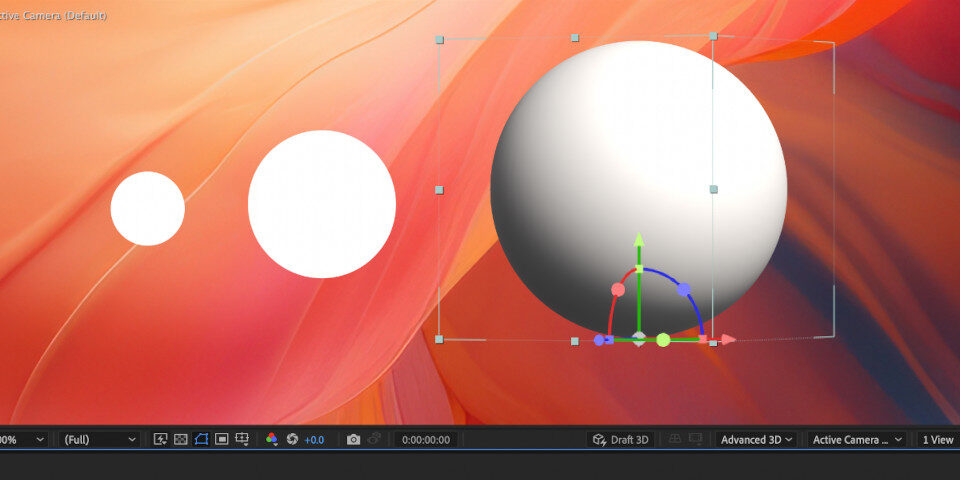Adobe releases After Effects 24.1
Motion graphics artists can import 3D models in glTF and GLB format directly into After Effects 24.1: one of a number of new 3D features in the latest version of the compositing software.
Adobe has released After Effects 24.1, the latest version of the compositing software.
It’s a significant update for motion graphics artists, moving a range of new 3D features – including 3D model import, 3D snapping and the Advanced 3D renderer – out of beta and into the stable version of the software.
Part of an ongoing overhaul of 3D compositing workflow in After Effects
Adobe has been overhauling 3D compositing workflows in After Effects for some time now, beginning by introducing new 3D gizmos and camera controls in 2020.
Workflow remains layer-based, but it is possible to manipulate layers in 3D space.
The latest update is the probably the most significant addition to the toolset since that release, moving a number of new 3D features that had previously only been available in separate beta builds of the software into the main stable release.
Import 3D models into After Effects directly in glTF or GLB format
Of those, the one that has been in beta the longest is native 3D model import.
Users can now import 3D models in glTF and GLB format directly into After Effects, rather than having to use a third-party plugin like Element 3D. OBJ import remains in beta.
As well as geometry, 3D lights and cameras can be imported in glTF and GLB format.
New Advanced 3D renderer brings final-quality 3D rendering to After Effects
Imported models can be rendered in the same 3D space as native After Effects cameras, lights and other 3D layers using the new Advanced 3D renderer.
First announced in September, it’s a hardware-agnostic GPU-based render engine, and is intended for final-quality rendering, unlike the existing 3D Draft preview mode.
According to Adobe, it should let motion graphics and visualization artists render less demanding shots directly inside After Effects without having to round-trip shots to DCC applications like Cinema 4D, a version of which is included with After Effects.

Also supports image-based lighting and stylized effects
The Advanced 3D renderer also supports image-based lighting for photorealistic work, and 2D/3D workflows for creating more stylized images like the one shown above.
The former makes it possible to light objects in the workspace with a HDRI environment map. It only supports the .hdr format, but you can convert images in other formats inside After Effects.
The latter makes it possible to use a rendered frame from a 3D model layer as a source, in order to apply 2D effects to portions of 3D scenes.
According to Adobe, users can create “highly stylized renders using effects that reference another layer, such as Displacement Map, Vector Blur [and] Calculations”.
New 3D snapping options for positioning layers
In addition, After Effects 24.1 introduces new 3D snapping options.
It is now possible to snap layers in 3D space while dragging the constrained X, Y, and Z handles and dual-axis combo handles of the 3D Gizmo, in order to position them more precisely.
Updates to the animation presets
Finally, outside the 3D toolset, After Effects’ animation presets have been updated.
The release notes don’t go into a lot of detail, but as well as adding new presets, existing presets have been updated to “incorporate more modern design elements”.
Price and system requirements
After Effects 24.1 is available for Windows 10+ and macOS 12.0+ on a rental-only basis. In the online documentation, the update is also referred to as the December 2023 release.
Single-app After Effects subscriptions now cost $34.49/month or $263.88/year, Adobe having raised the prices of many Creative Cloud subscriptions last month.
Read more about the new features in After Effects 24.1 in the online release notes
Have your say on this story by following CG Channel on Facebook, Instagram and X (formerly Twitter). As well as being able to comment on stories, followers of our social media accounts can see videos we don’t post on the site itself, including making-ofs for the latest VFX movies, animations, games cinematics and motion graphics projects.
